
The cost to paint the interior of a house depends on size, layout, type of surface, and more. Learn what factors can influence your total in this guide.
Highlight your natural wood accents for a stunning look


Painting your home lets you easily turn a room into your perfect space. At the same time, it can be challenging to pick the right colors. That’s especially true if you’re working with natural wood trim. Understanding which paint colors go with wood trim is crucial for creating a cohesive look and making the natural material pop in your space.
Test a color before you commit by painting large swatches on your walls and seeing how they look during different times of day.
| Paint Colors | Matching Trim Shade |
|---|---|
| Dark brown | Light, light-medium |
| Gray-green | Light, light-medium |
| Light blue | White, dark |
| Light greige | Medium, medium-dark |
| Mid-range green | Medium, medium-dark |
| Navy blue | Light, medium-light |
| Tan/beige | Medium |
| Terracotta | Light, light-medium |
| White/Off-white | Light, light-medium |
| Yellow | Medium |

White has a reputation for being boring, plain Jane, and sterile. But, when paired with medium-to-dark wood trim, white walls are effortlessly gorgeous.
The contrast between the light, airy walls and the darker natural tones of the wood baseboards and moldings creates a bold effect without committing to bright or wild colors on your walls. This pairing is a great choice for more intimate spaces and for rustic or contemporary farmhouse decor styles. If you’re working with warmer wood tones, look for a creamy shade with amber or yellow undertones.
For inspiration:
Glidden® Aria
Sherwin-Williams Alabaster
Farrow & Ball Farrow's White
Valspar® Du Jour
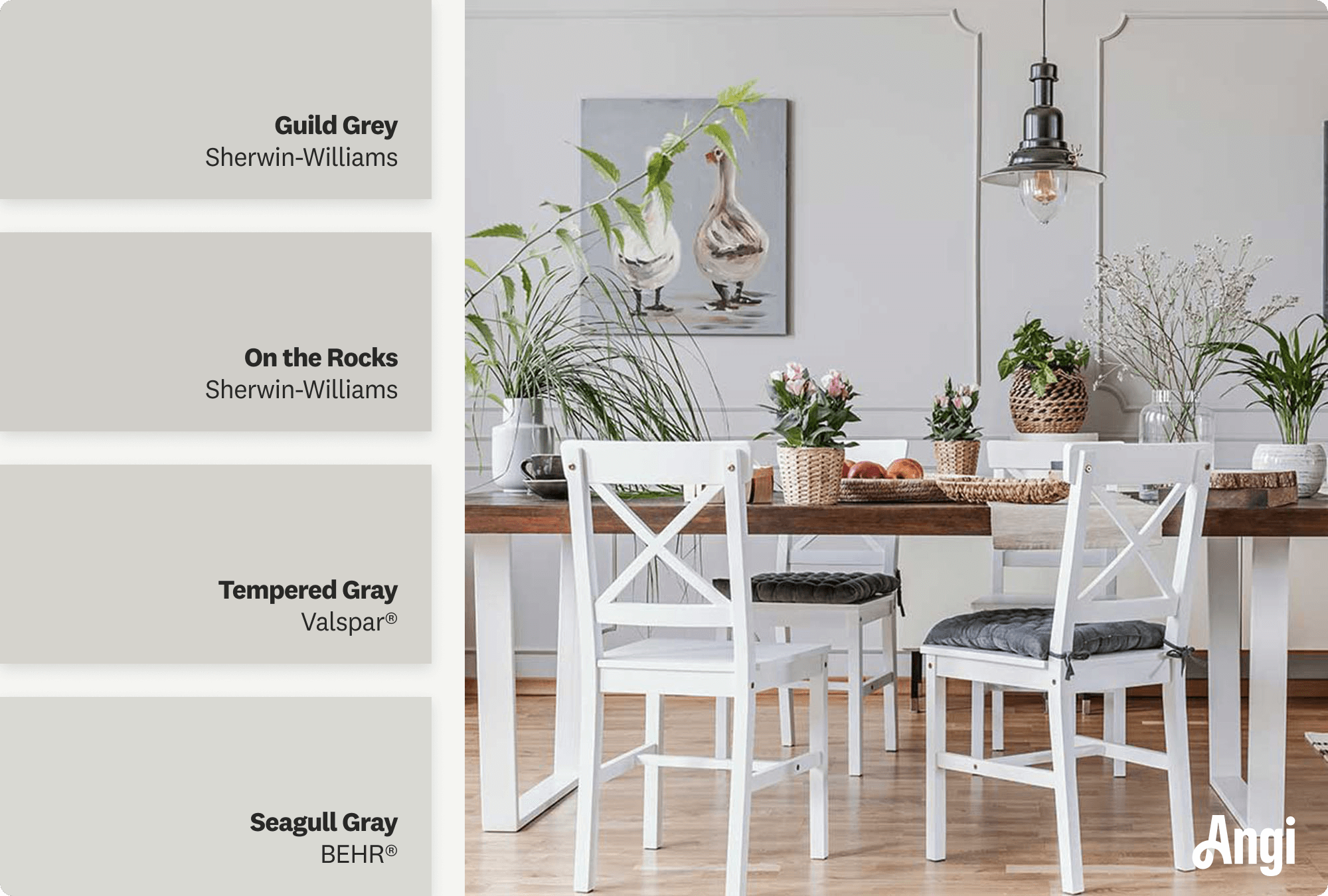
If you’re looking for a more modern paint color with wood trim, look for a sleek shade of light greige. This blend of gray and beige can range from deep and dramatic to pale and delicate.
While light greige gives a fresh and airy feel, it’s not quite as stark as some whites can be on four contiguous walls. If the tone of your wood trim is dark, look for a light greige with a cooler, blue-tinged undertone. If you have a lighter-color wood, like pine or maple, feel free to go a bit lighter with your greige to minimize the contrast.
For inspiration:
Sherwin-Williams Guild Grey
Sherwin-Williams On the Rocks
Valspar® Tempered Gray
BEHR® Seagull Gray
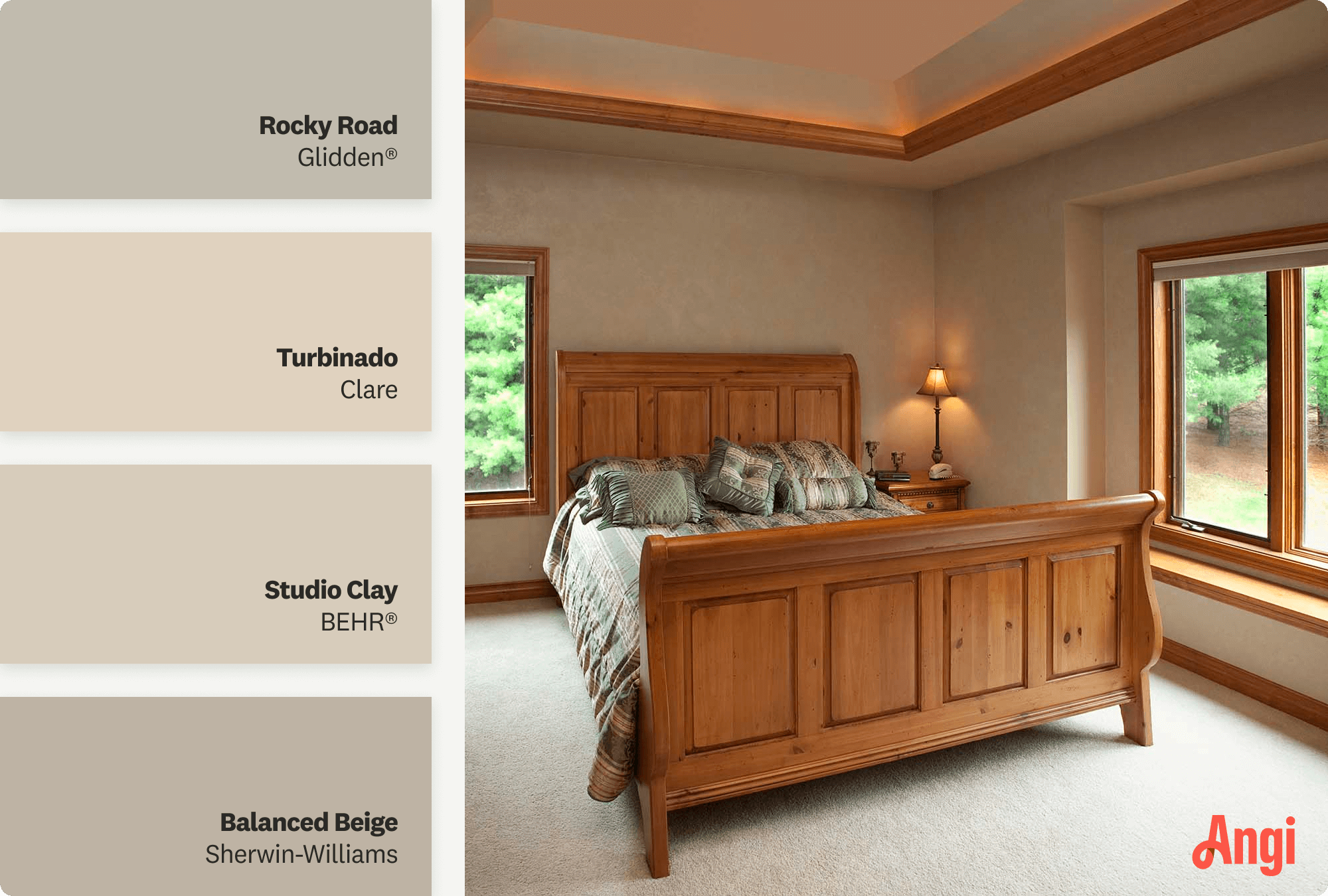
If white and white-adjacent pale tones feel too stark or cool for your style, turn to beiges and tans. These colors often get mocked as boring, but that’s easily countered with the right furnishings and fabrics. They’re especially attractive next to mid-toned trim with warm honey undertones.
There are a large number of shades available in these colors, so paint a few test panels to ensure you pick the right shade for your room.
For inspiration:
Glidden® Rocky Road
Clare Turbinado
BEHR® Studio Clay
Sherwin-Williams Balanced Beige

For a wall color with slightly more impact, look for a light-toned shade that combines gray and green. Mid-range tones can look great with warmer, lighter-toned trim. The lighter the shade, the paler it will look in a large room, especially one with lots of natural light, so try a few different shades to pick the one that works best with the precise wood tone in your space.
Add plants, large potted trees, and prints that evoke nature for an indoor oasis that’ll quickly become the most relaxing room in your house.
For inspiration:
Sherwin-Williams Aloof Gray
Farrow & Ball Mizzle
Valspar® Quiet Mint
Sherwin-Williams Conservative Gray
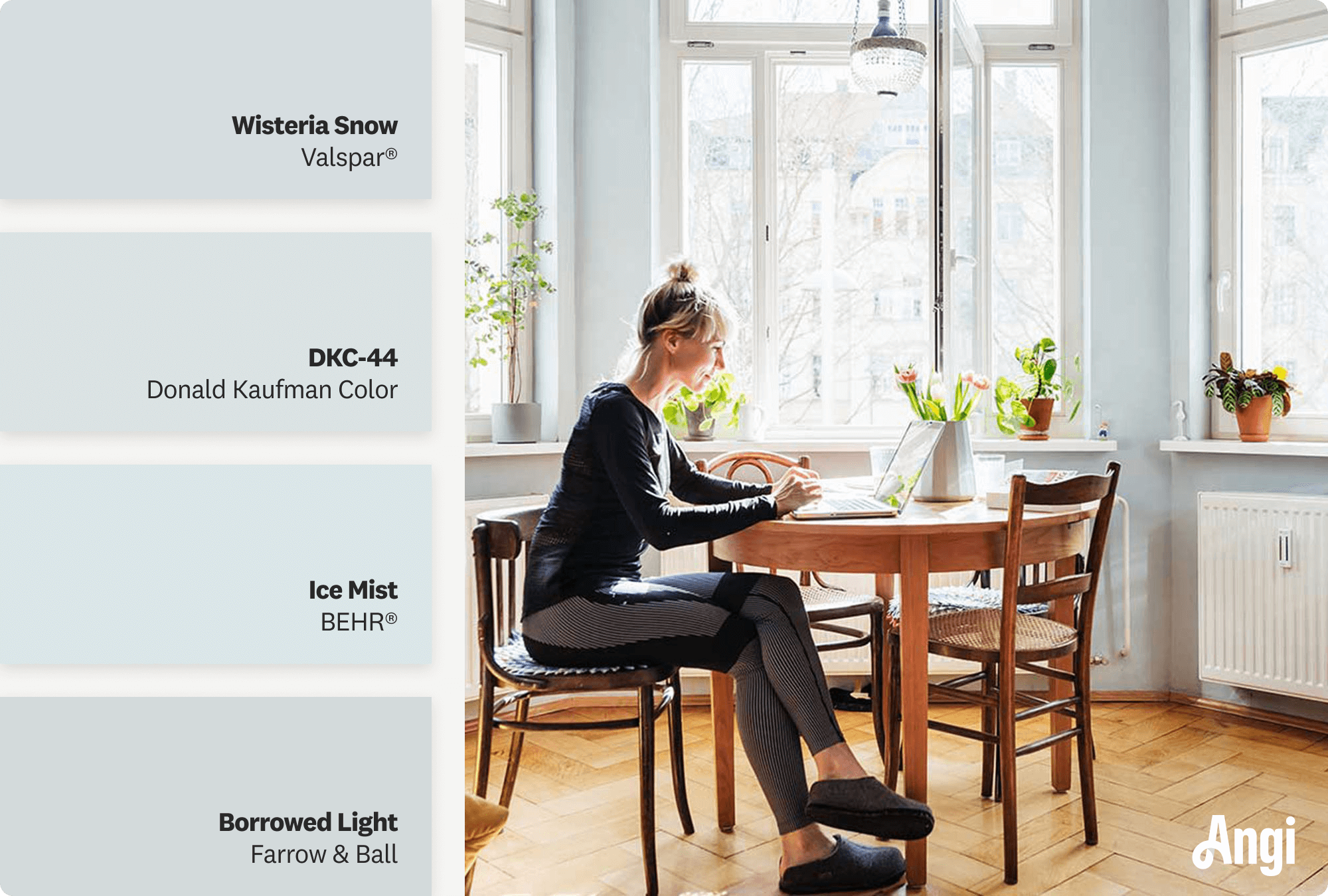
Another high-impact choice is a light, icy, crisp blue shade. This tone is an excellent choice if you painted your trim white. It can create a sense of airiness and lightness that makes everything from work to relaxation a bit more enjoyable. It’s also a great choice for wood stains on the darker end of the spectrum, as it lets you amp up the contrast and really draw attention to your natural trim.
Icy blue shades add a pop of color without overpowering the rest of the room’s decor or the natural beauty of the trim without making the room feel dark or cave-like.
For inspiration:
Valspar® Wisteria Snow
Donald Kaufman Color DKC-44
BEHR® Ice Mist
Farrow & Ball Borrowed Light
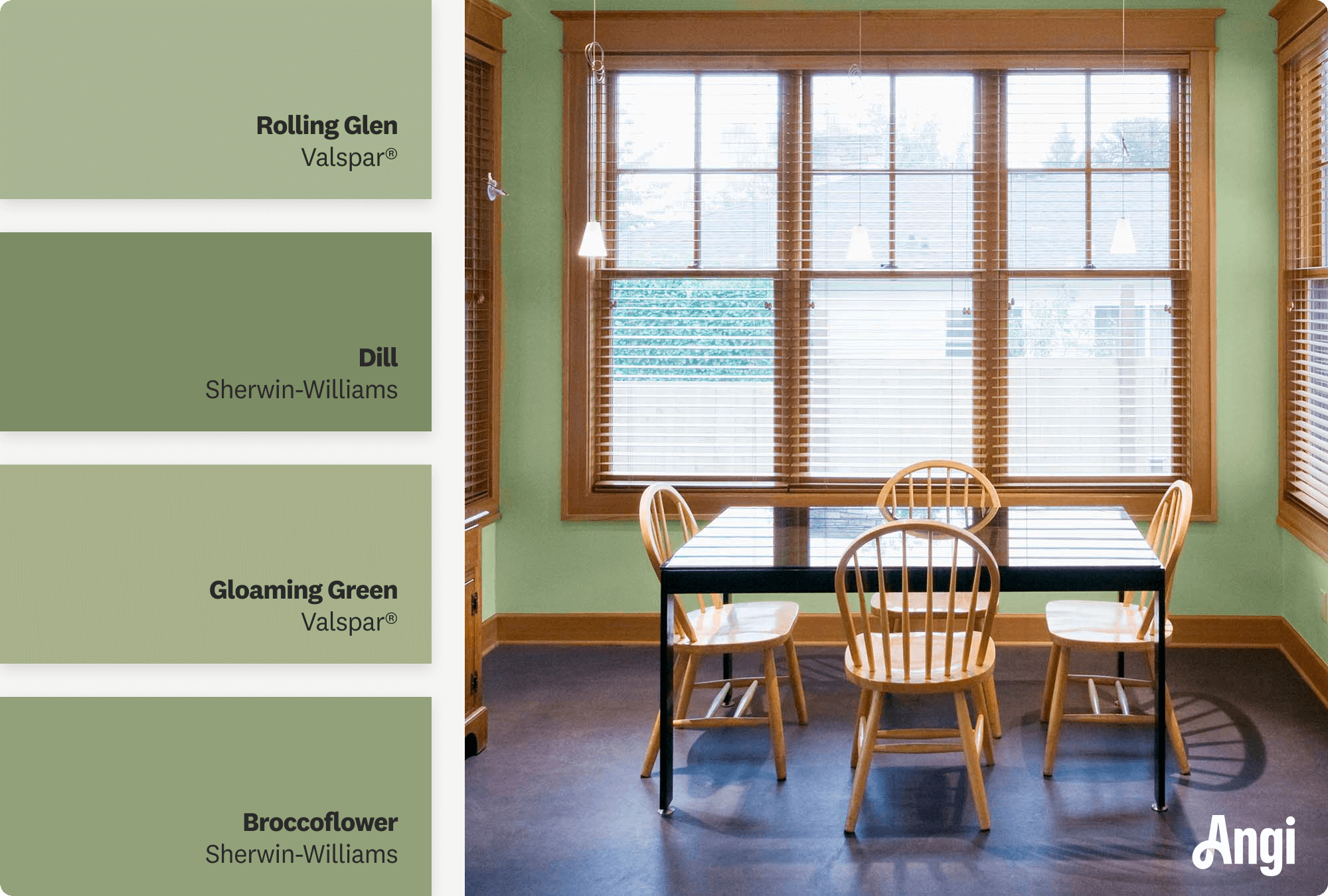
If you’re looking for a paint color that evokes nature but makes a slightly bolder design statement, consider mid-range greens. These colors mirror grass and leaves, which are natural design partners for wood tones. At the same time, if you restrict yourself to slightly muted tones, you’ll maintain a certain level of elegance and flair.
Look for colors that mimic the colors of moss and grass. You can also choose warm tones or cool ones, depending on your design preferences and specific wood trim colors.
For inspiration:
Valspar® Rolling Glen
Sherwin-Williams Dill
Valspar® Gloaming Green
Sherwin-Williams Broccoflower
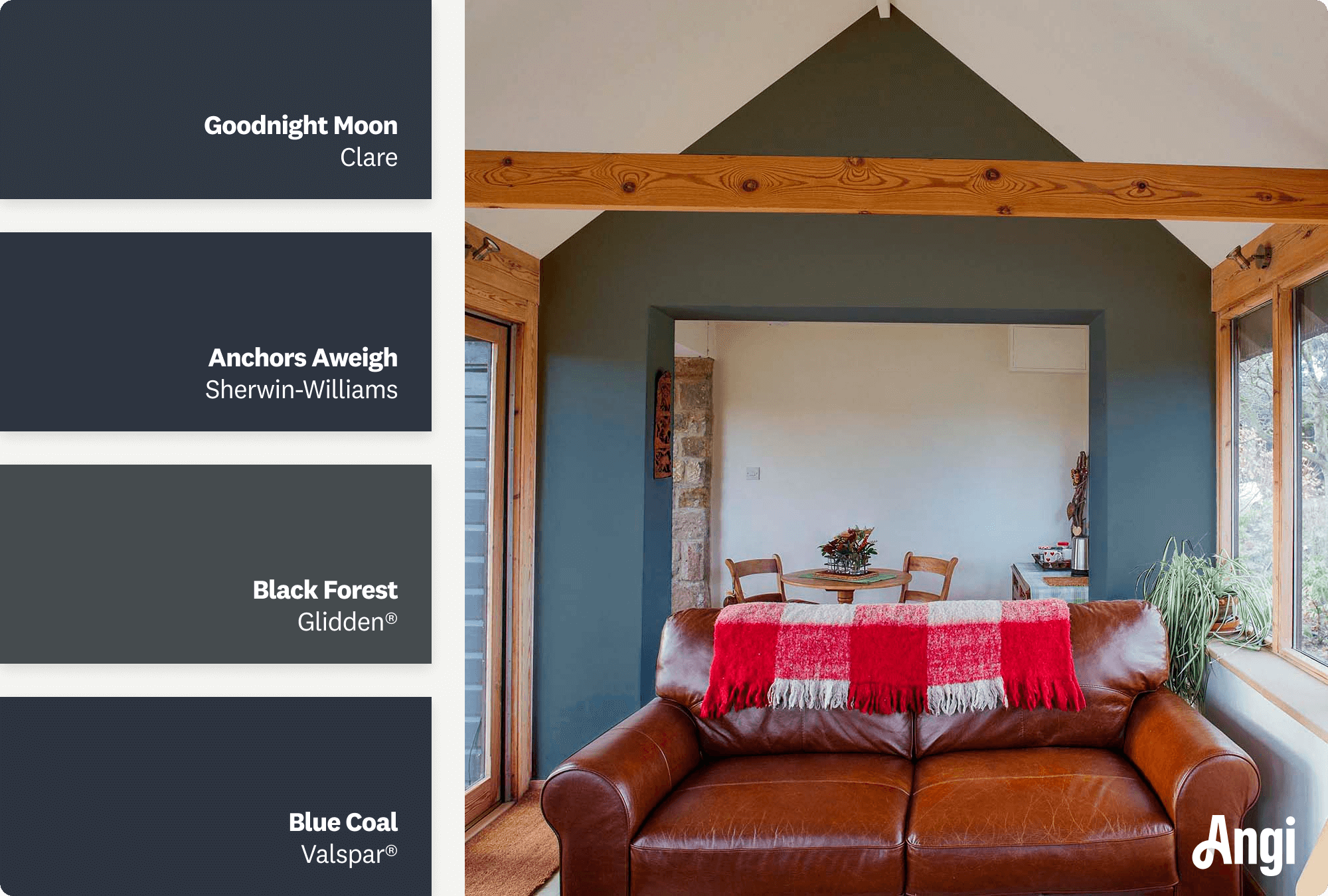
If pale pastels and off-whites don’t float your boat, you can also go in the opposite direction. Choose a dramatic dark shade to set off those lovely natural baseboards and window sills.
Look for shades with deep blue undertones to make lighter tones of wood the centerpoint. In fact, navy blue is one of the best paint colors that go with pine wood. It’s a striking approach that helps create a cozy yet sophisticated atmosphere that lends itself to a number of design styles, from traditional to contemporary.
Dark colors might be a little intimidating if you’ve never used dark paint before, but they’re not as daunting as they might seem at first. Experiment with decorative touches like mirrors as well as throw pillows and art in lighter shades to help balance out the walls.
For inspiration:
Clare Goodnight Moon
Sherwin-Williams Anchors Aweigh
Glidden® Black Forest
Valspar® Blue Coal
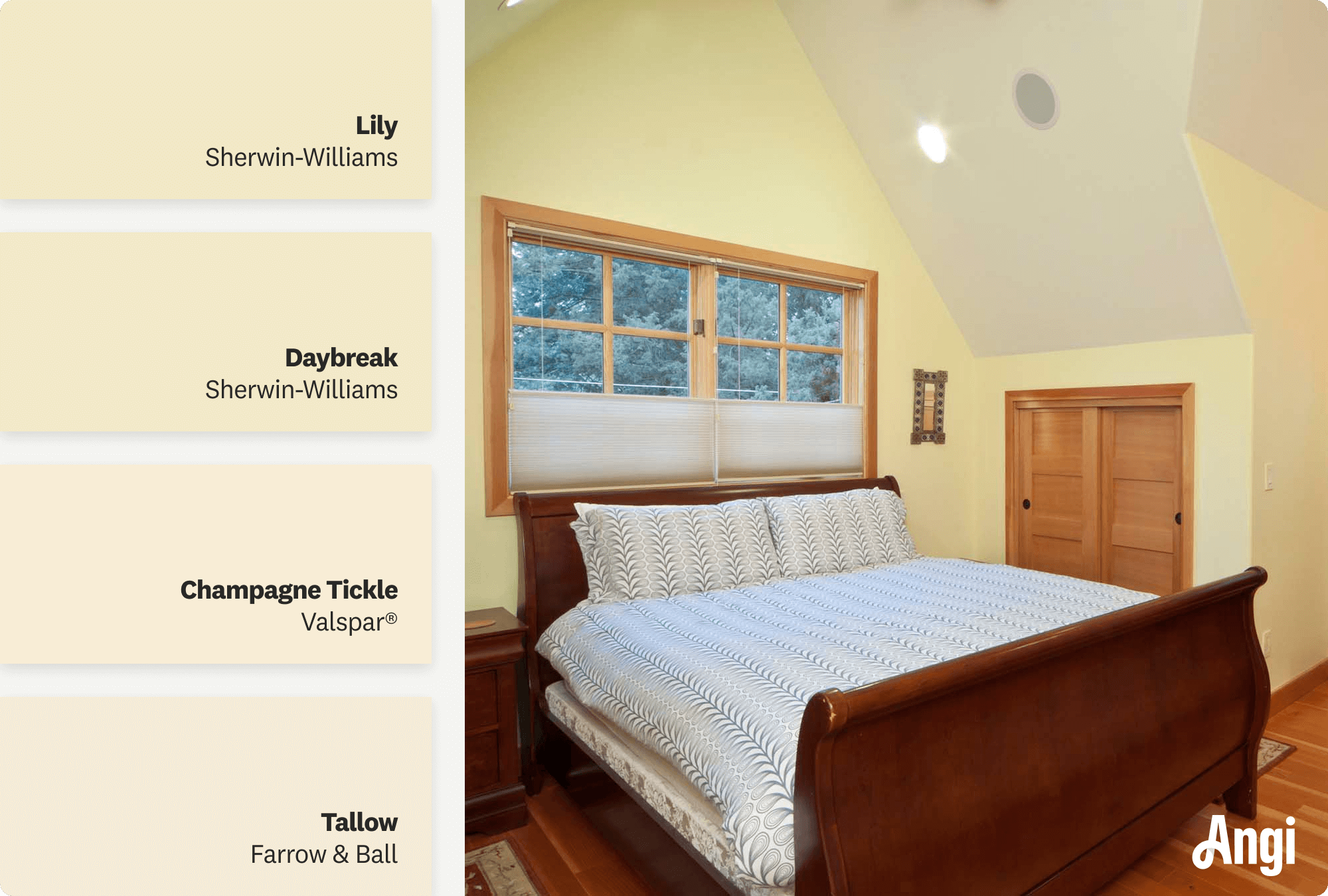
Play with the light tones in your pine or maple by pairing it with a light, airy yellow. Choose a slightly more saturated yellow for an intriguing pop or a yellow that’s closer to white to make that natural pine really stand out.
For inspiration:
Sherwin-Williams Lily
Sherwin-Williams Daybreak
Valspar® Champagne Tickle
Farrow & Ball Tallow
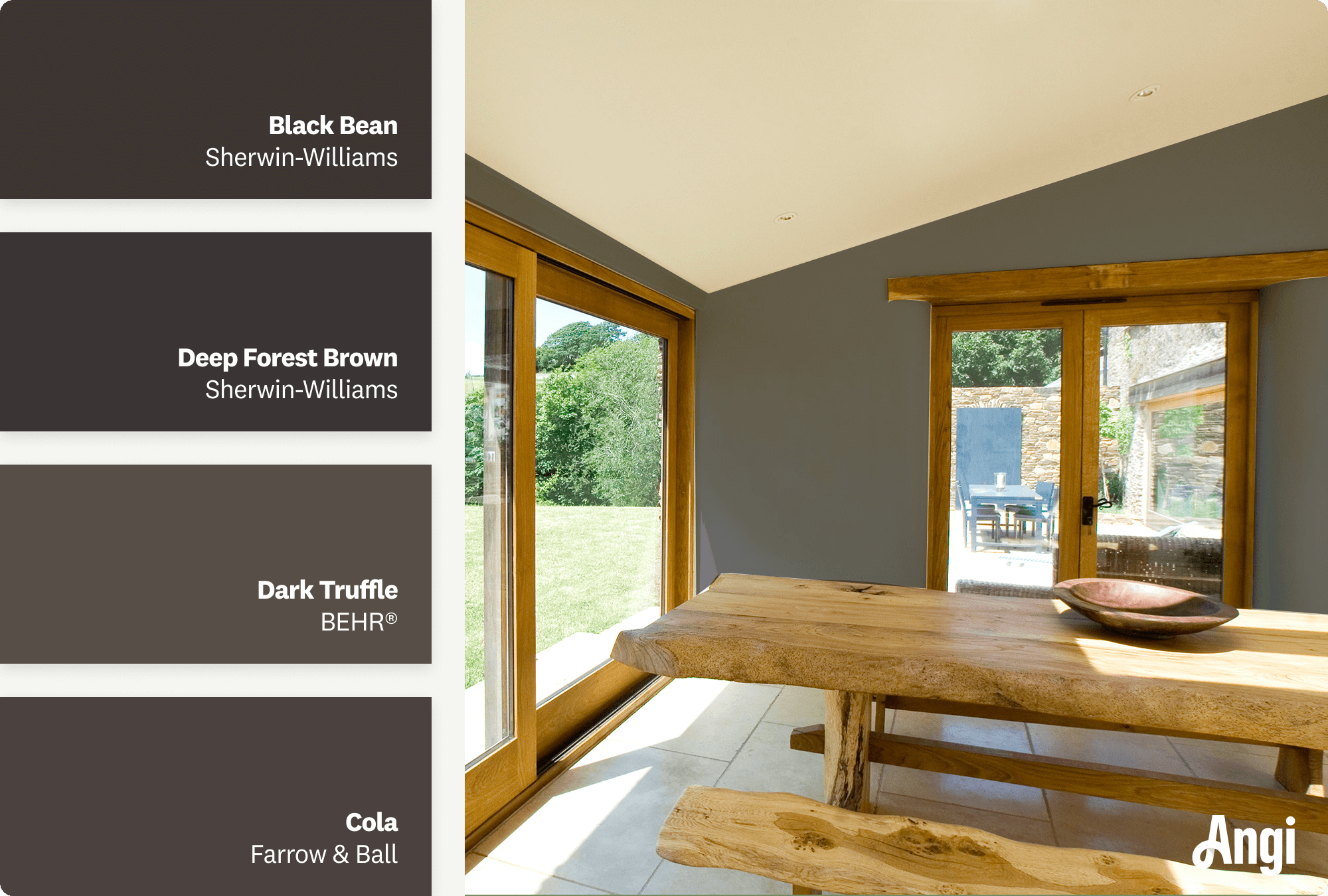
Balance your browns by adding a darker hue with your lighter pine-colored trim. You can choose to go with an earthier dark brown or a richer espresso shade. Either way, your browns will complement each other beautifully when you’re finished.
For inspiration:
Sherwin-Williams Black Bean
Sherwin-Williams Deep Forest Brown
BEHR® Dark Truffle
Farrow & Ball Cola
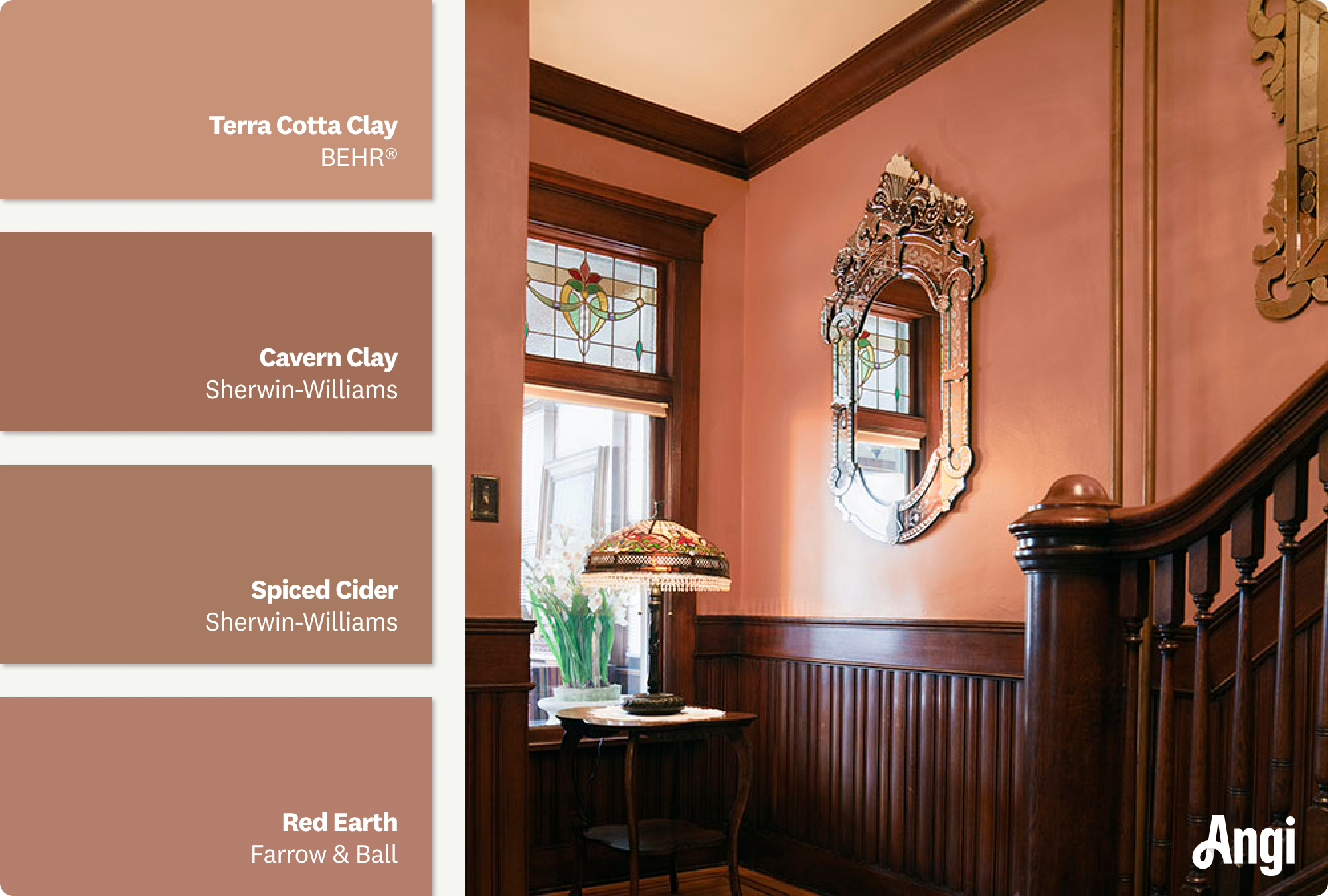
Terracotta paint brings a cozy, earthy warmth to a space, making it feel grounded, inviting, and full of character. It works well in rooms where you want a relaxed, natural vibe. Think boho living rooms, rustic kitchens, or southwestern-inspired bedrooms. This color family pairs beautifully with light to medium wood trim, like oak or maple, because it echoes the warm undertones in the wood without blending in too much.
For Inspiration:
BEHR® Terra Cotta Clay
Sherwin-Williams Cavern Clay
Sherwin-Williams Spiced Cider
Farrow & Ball Red Earth
Knowing what paint colors go well with wood trim is the first step, but choosing the specific shade and hue is another thing that can be intimidating. We have a few tips to help make the process a bit easier for you.
Think about your other hard finishes. Matching your trim and making it pop is great, but if your paint color clashes with other hard finishes, like flooring, countertops, and cabinets, your room won’t look well put together. Think about all of the permanent elements in your space and try to choose a paint color that meshes well with everything.
Contrast the shade with your trim. Wood trim often has the biggest impact on a room when it contrasts with your paint color to make it pop. If you have a lighter trim, consider a darker wall color. Working with walnut, mahogany, or another dark wood species? Consider a lighter wall color to create a drastic and stunning contrast.
Draw on the natural wood colors. It might be helpful to start with the natural wood tones you have and pull inspiration from that. If you see reds or yellows in your wood, consider similar colors for your paint and just go with a lighter or darker shade. This can create a cohesive look while still making the trim stand out.
Get samples. It’s always a good idea to get paint samples to see what it actually looks like next to your trim. Sometimes, a color that looks good in the store doesn’t look so good when the natural light in your home hits it. Bring home some samples and check how each looks and feels in your room at different times of the day.
Hire a professional. When in doubt, don’t be afraid to hire a local interior painter or interior designer to help you choose. Experts can often draw on experience, color psychology, and trends to help guide you to the right paint color.
From average costs to expert advice, get all the answers you need to get your job done.

The cost to paint the interior of a house depends on size, layout, type of surface, and more. Learn what factors can influence your total in this guide.

Refurbishing furniture with chalk paint brings new life to a piece. Learn how much it costs to paint furniture with chalk paint based on size and complexity.

Discover the cost for your electrostatic painting home project, including average prices, cost factors, and tips to help you budget and save.

Are you ready to give your popcorn ceiling a modern refresh? Learn how to paint popcorn ceilings to better suit your home's design aesthetic.
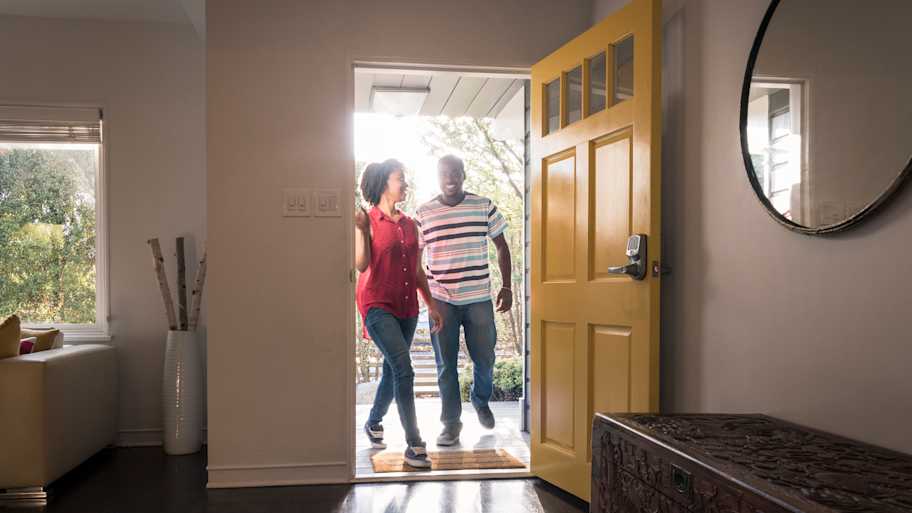
From the type of pigment to when to apply it, these tips for painting a front door will save the day the next time this home feature needs a refresh.
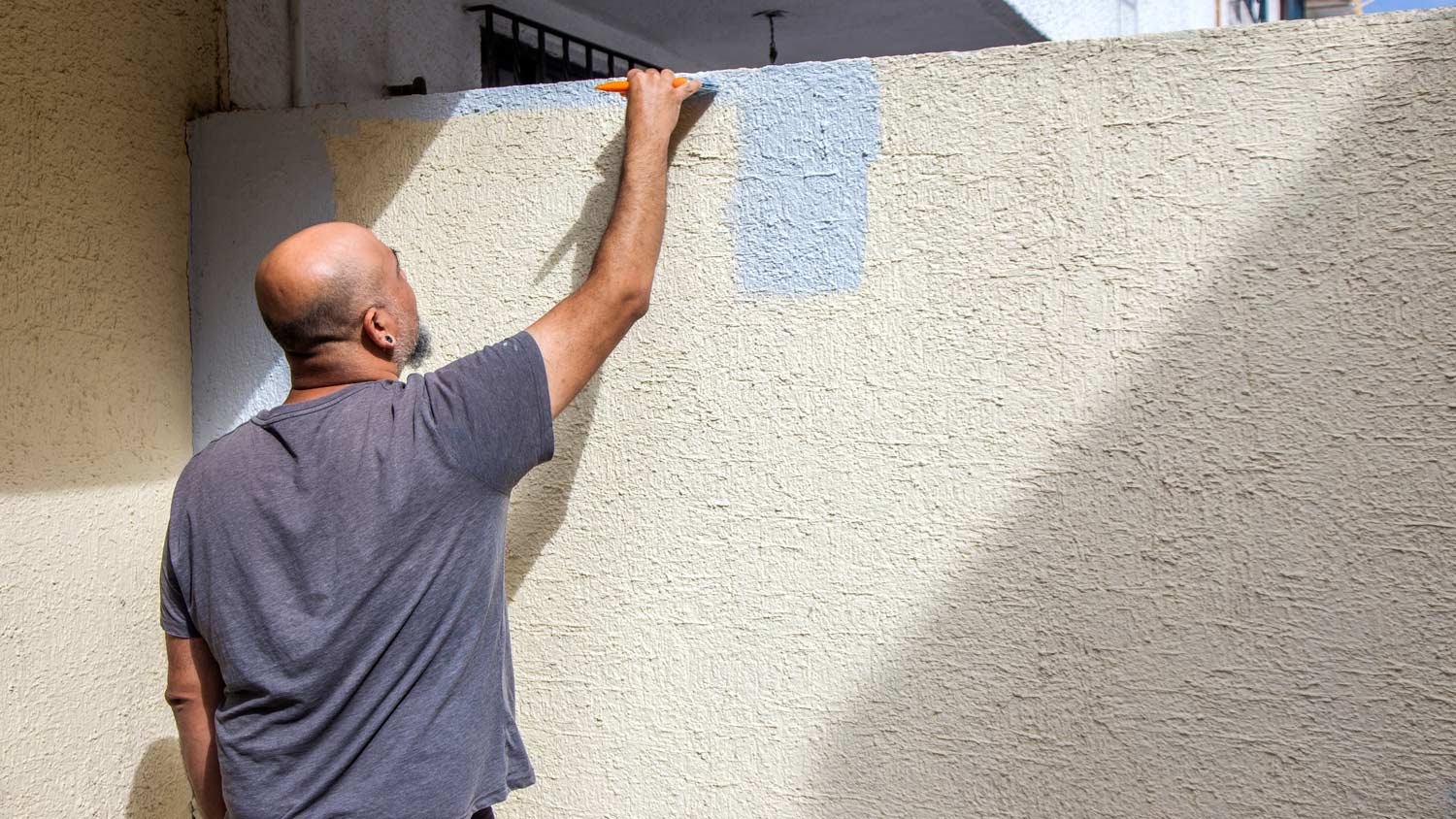
Looking to hide flaws in your walls without sacrificing a smooth finish? Learn how to do orange peel texture on walls to enliven any room in your home.